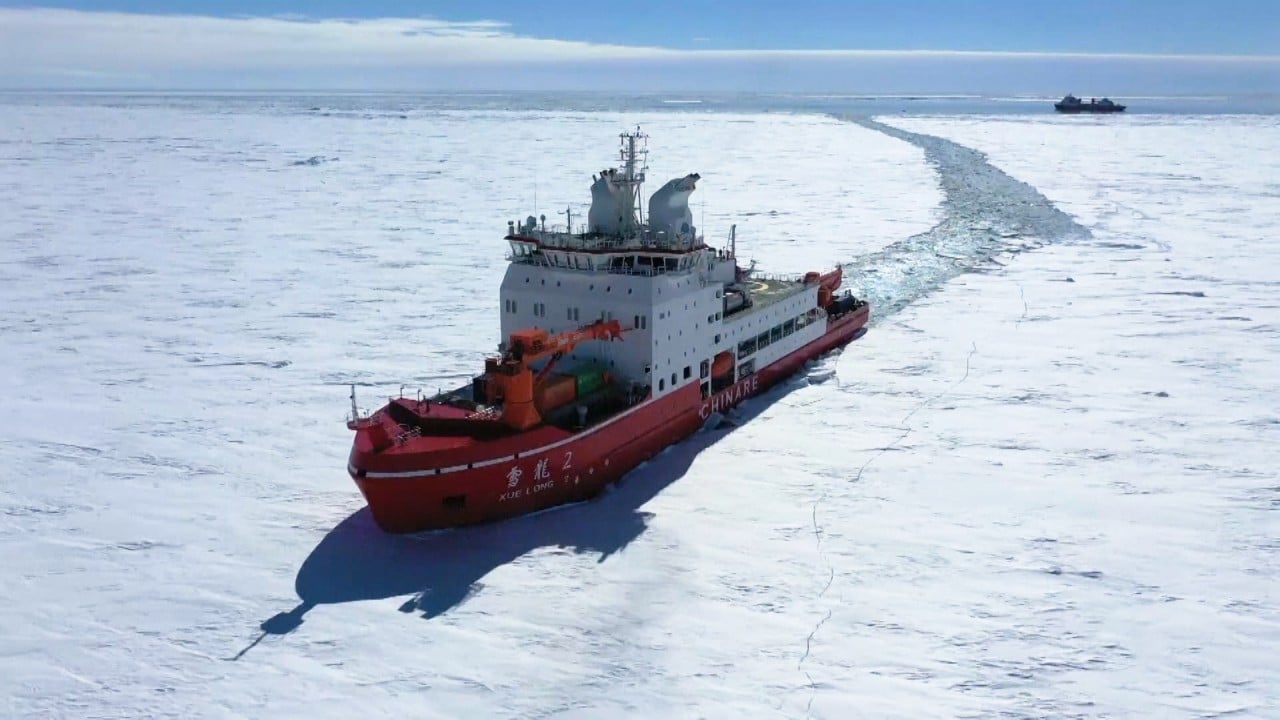Studies by two separate research teams have identified discrepancies in estimates of the vital Southern Ocean carbon sink, highlighting what could be a significant gap in mainstream climate modelling.
The Southern Ocean, also known as the Antarctic Ocean, is crucial to the Earth’s climate as one of its main carbon sinks.
Carbon sinks are areas that absorb more carbon dioxide than they release, and are vital to mitigating increases in carbon emissions due to human activity. The Southern Ocean accounts for around 40 per cent of global ocean uptake of anthropogenic greenhouse gases.
Despite the Southern Ocean’s importance as a carbon sink, there has long been uncertainty about its exact uptake, due to physical conditions like temperature variations and ice cover, as well as seasonally dependent measurement methods.
An international team from Britain, the United States, Germany and Belgium and another from China published new research papers last week taking a closer look at estimates of the region’s carbon sink capacity.
Both papers indicated that widely used carbon mapping models could be inaccurate.
The Chinese team’s paper was published in Communications Earth & Environment, a Nature Portfolio journal, while the international team’s paper ran in the journal Science Advances. Both were published last Wednesday.
Widely used data sets like the Surface Ocean CO2 Atlas (SOCAT) – which collects global data from instruments aboard ships, floats, and sail drones – can be limited due to a lack of winter data.
The Global Carbon Project, an organisation tracking greenhouse gas emissions and their causes, uses the SOCAT model and is the publisher of the Global Carbon Budget – a measure of carbon emissions and sinks worldwide used by the United Nations.
Using data from research ships that sailed in the region in the summer months of 2019 and 2020, the British-led international team found that there was a “25 per cent stronger [carbon dioxide] uptake in the Southern Ocean” than estimated by SOCAT-based models.
The international team identified limited data and the ocean temperature gradient as sources of error in air-sea carbon flux models. Measurements can be sensitive to temperature conditions like the warmth of ships and the cool surface layer of the ocean.
The researchers used eddy covariance, a gas exchange measurement method based on instruments mounted on the foremast of the research ships.
This method is not affected by upper-ocean temperature gradients, allowing researchers to directly measure air and sea carbon dioxide flux, or the movement of carbon dioxide between the air and sea.
The team from China studied another method used to estimate air-sea carbon flux. This involves measuring partial pressure, or the amount of carbon dioxide within the upper ocean, with the help of machine learning. This method helped to reduce uncertainty, the Chinese Academy of Sciences (CAS) team said.
However, they noted that models based on mapping partial pressure with machine learning also tended to overestimate the region’s carbon sink capacity compared to mainstream models.
The researchers discovered that the discrepancy had led to a “16 per cent overestimating of Southern Ocean carbon sink over the past three decades”, due to seasonally uneven measurements.
Accounting for this led to readings more closely resembling the pressure-based estimates used in the carbon budget. However, the CAS team did not indicate that the carbon sink in the region might indeed be stronger than expected, as the international team found.
Both studies indicated continued uncertainty over the carbon sink capacity of this key region.
The international team was led by researchers at the University of East Anglia and Plymouth Marine Laboratory in the United Kingdom.
According to Yuanxu Dong, first author of the team’s paper and a researcher at East Anglia: “Accurate quantification of the Southern Ocean [carbon dioxide] sink is essential for the assessment of the Earth’s climate.
“However, it is the most uncertain region regarding the estimate of its [carbon dioxide] sink capacity.”
SOCAT chairwoman Dorothee Bakker, meanwhile, highlighted “a real need for sustained and expanded funding of surface ocean [carbon dioxide] measurements and their SOCAT synthesis, in order to constrain Southern Ocean [carbon] uptake and to inform climate policy”, according to a statement from the university.
“Changes in the Southern Ocean carbon sink strongly affect the global ocean [carbon dioxide] uptake,” the CAS researchers wrote in their paper.
“It is essential to quantify the global ocean carbon sink and its temporal variability to understand further the response of the carbon cycle to future global change.”
The Chinese researchers said that the melting of sea ice had an impact on the intensity of the Southern Ocean’s carbon sink, and its complete melting would release “a remarkable amount of [carbon dioxide]” into the atmosphere.
“This would weaken the role of the Southern Ocean in the global ocean [carbon dioxide] uptakes, and the role of the global ocean in buffering the rise in atmospheric [carbon dioxide] concentration.”



